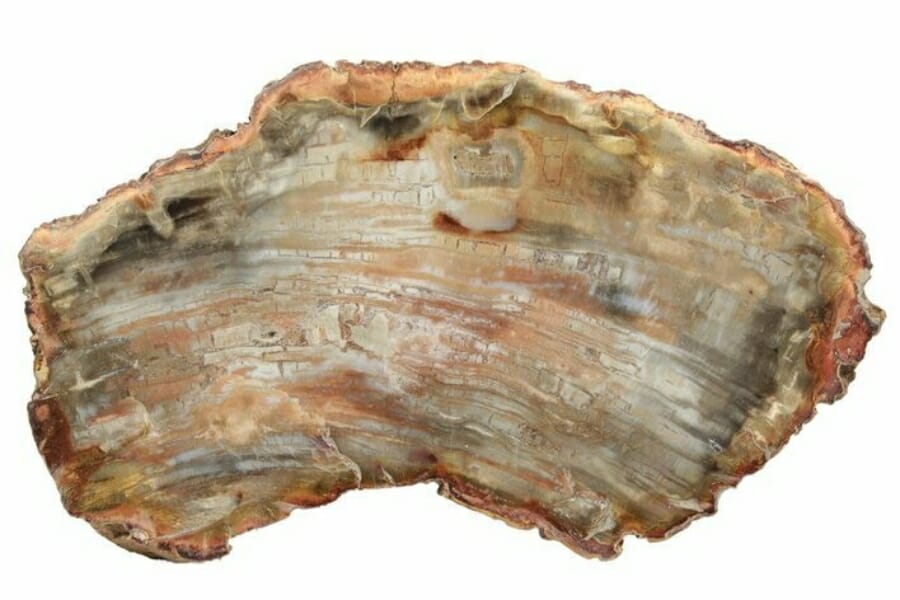Exploring the state’s rugged terrain offers a unique opportunity to discover petrified wood, a fossilized treasure from ancient forests. With the right tips, you’ll be ready to embark on your own adventure and uncover these fascinating remnants of prehistoric life.
Knowing where to look and what to expect will increase your chances of spotting these remarkable pieces scattered across this great state’s terrain!
Petrified wood you can find in the US
In the United States, several types of petrified wood can be found, each with unique characteristics based on the original tree species and the minerals involved in the fossilization process. Here are some of the types you’ll be able to find.
Araucarioxylon
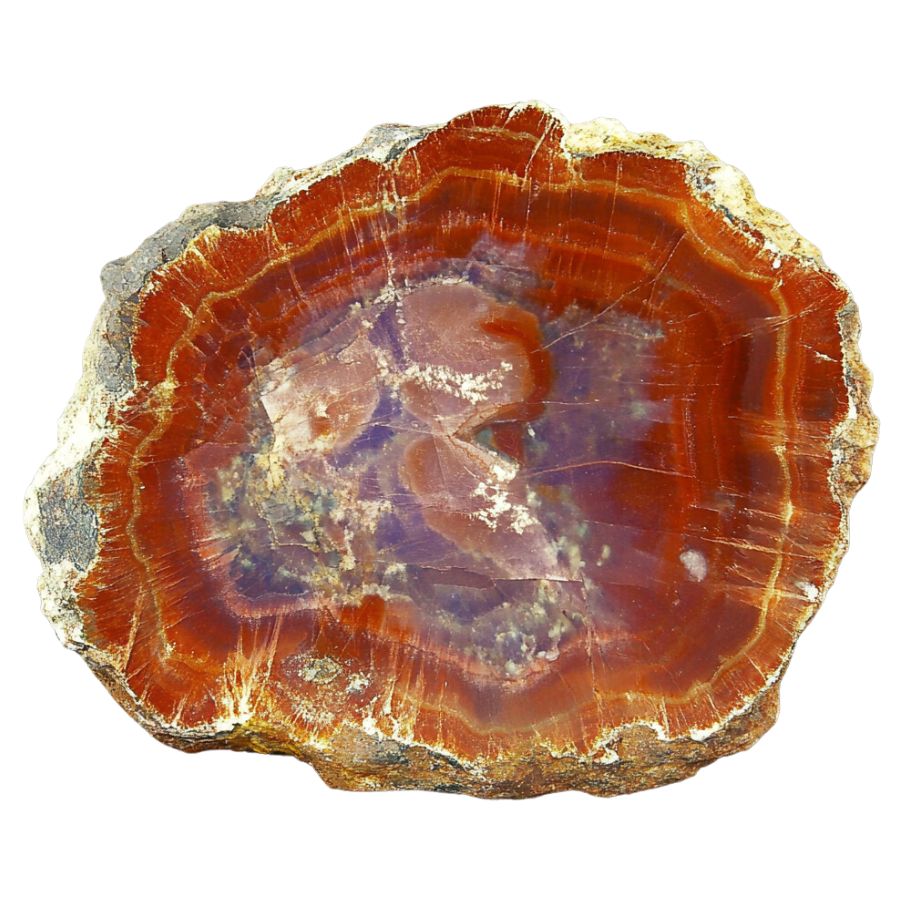
Found in the Petrified Forest National Park in Arizona, this is one of the most famous types of petrified wood. It comes from an extinct species of conifer. As Arizona’s state fossil, Araucarioxylon holds a special place in the state’s natural history.
These trees once formed vast forests during the Late Triassic period, about 225 million years ago. The vibrant colors in this petrified wood come from minerals that replaced the original tree material over time.
Metasequoia
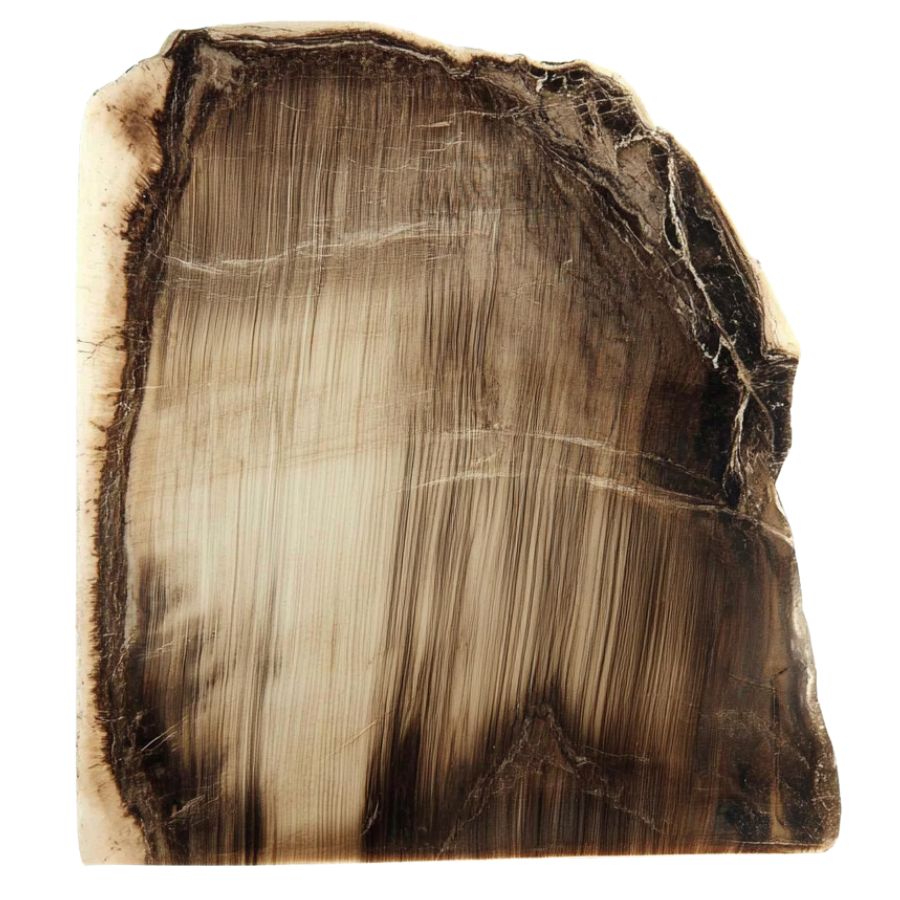
Often referred to as dawn redwood, this type of petrified wood can be found in various parts of the U.S., including the Pacific Northwest. Metasequoia was once thought to be extinct until living trees were later discovered in China.
Furthermore, its fine grain and reddish-brown color are characteristic features.
Palmoxylon
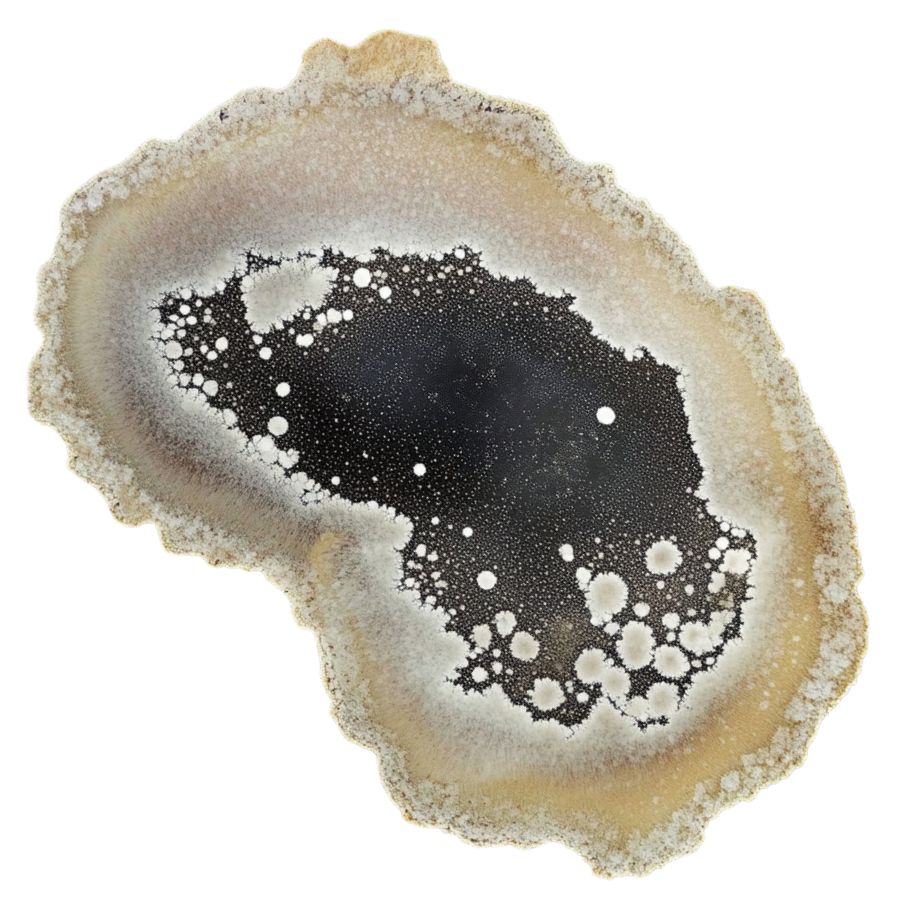
This petrified wood originates from palm trees and is often found in the Gulf Coast states like Texas and Louisiana. Recognized as the state stone of Texas, Palmoxylon is abundant and holds cultural significance.
The wood’s unique speckled or dotted pattern comes from the vascular bundles of the original palm tree. These fossils date back to the Cretaceous period, when the area was tropical and teeming with life.
Taxodium
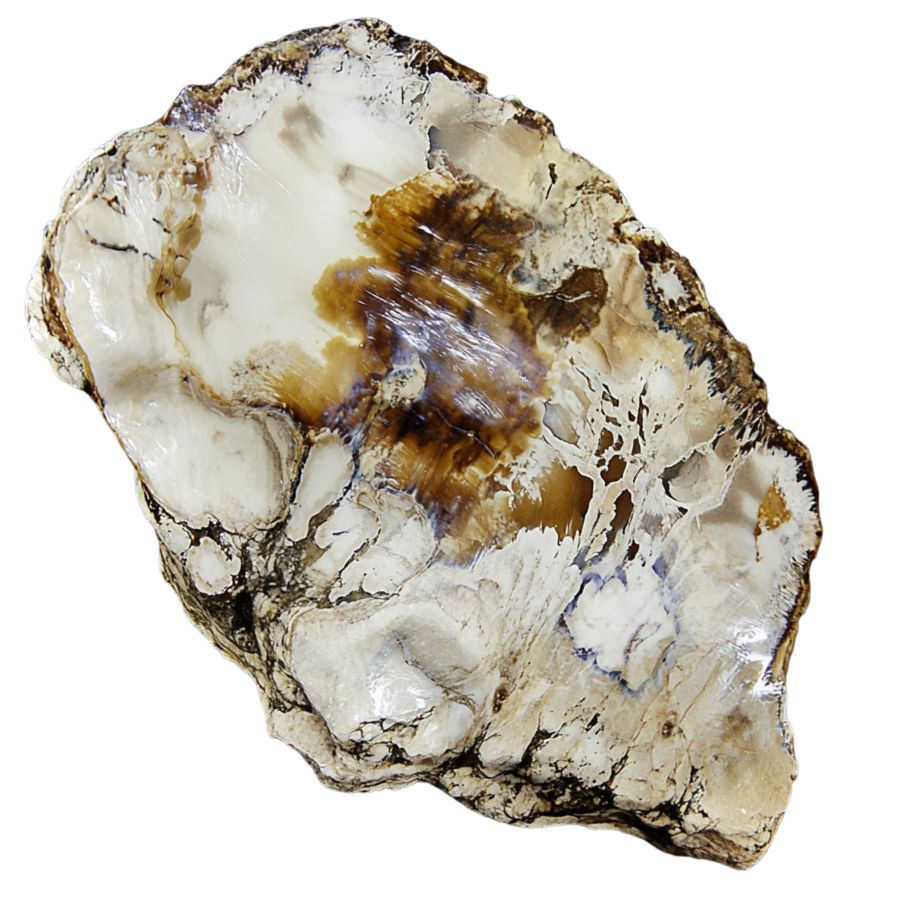
Also known as bald cypress, this petrified wood can be found in the southeastern U.S., particularly in areas that were once swampy. Taxodium wood is often found in places that were ancient swamps, where these trees thrived millions of years ago.
The wood is durable and shows intricate grain patterns, with growth rings and knotholes that tell the story of its long history. It’s a fascinating glimpse into the wet environments that once dominated the Southeast.
Sequoioxylon
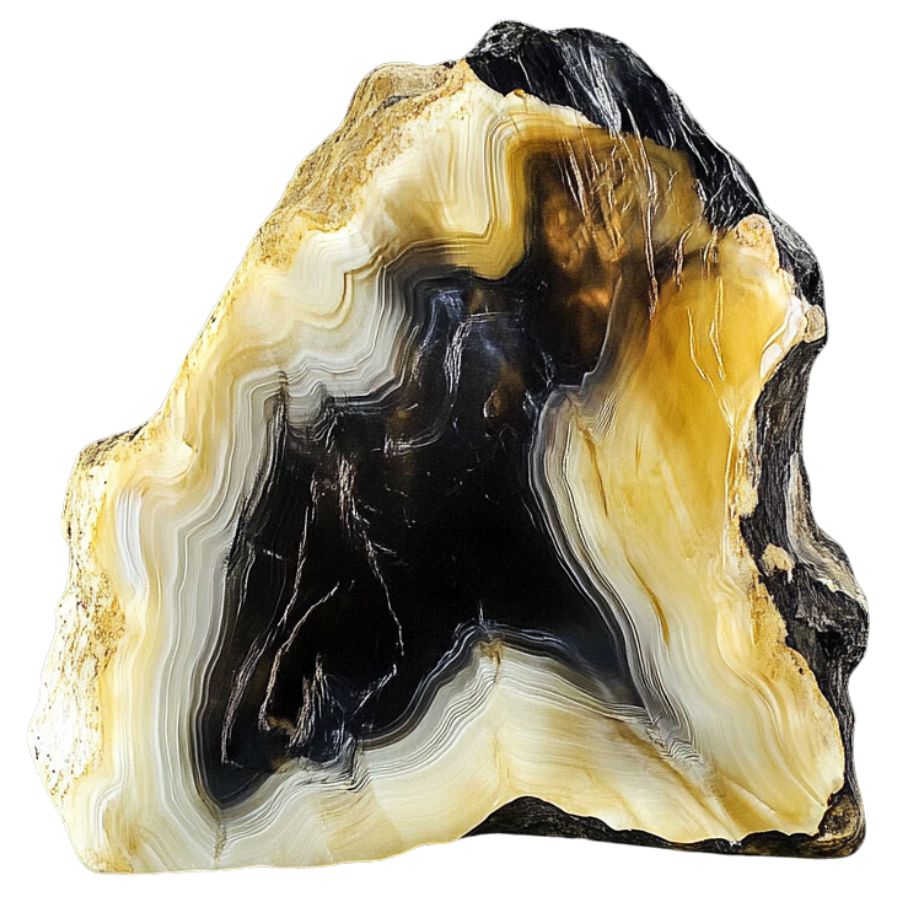
Petrified wood from ancient sequoia trees, found in places like California, where sequoia forests once thrived. These trees are the ancestors of the giant sequoias that still stand in California today.
The petrified wood is notable for its large, straight grain and reddish color, reflecting the immense size and age of the original trees.
Ginkgoxylon
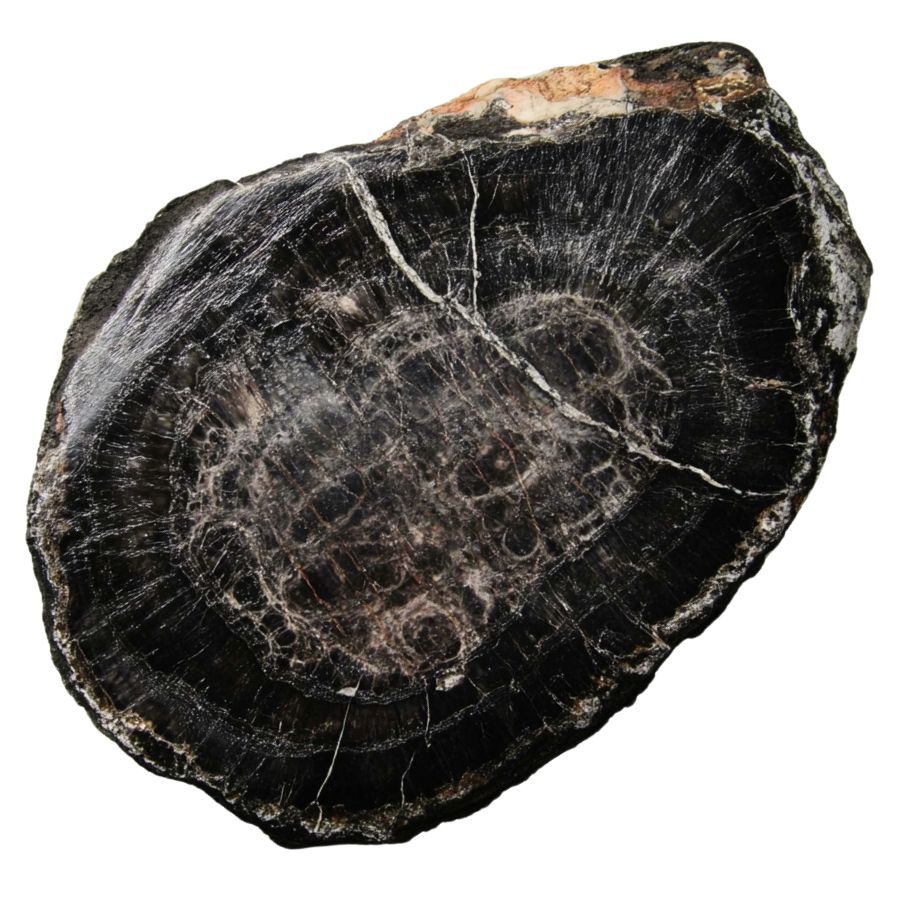
Petrified wood from ancient ginkgo trees, which can sometimes be found in states like Oregon and Washington. Ginkgo is one of the oldest tree species on Earth, with fossils dating back over 200 million years.
Ginkgo petrified wood often has a light color and may show patterns similar to the fan-shaped leaves of the living ginkgo.
Dicotyledonous Wood
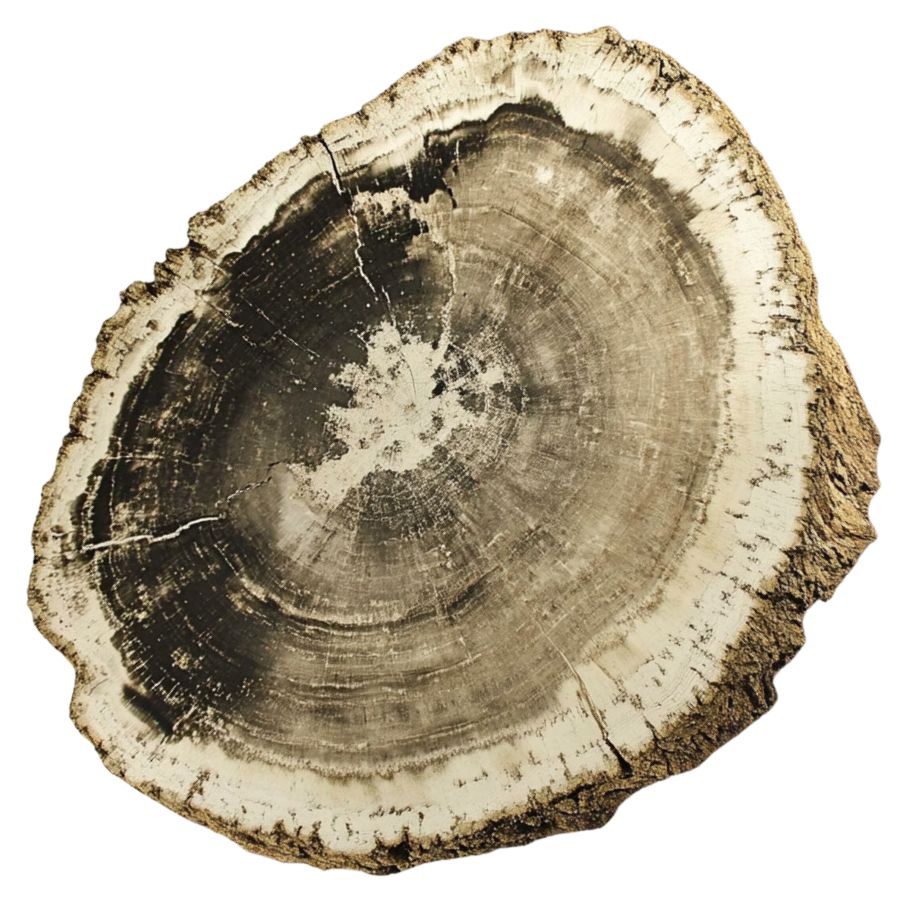
Found across various states, this type of petrified wood comes from broadleaf trees, making it more common and varied in appearance. You can spot dicotyledonous wood by the distinct vessels and growth rings that indicate seasonal changes.
This type of petrified wood is often found in regions that were once temperate forests, offering clues about the diverse plant life that existed millions of years ago.
Piceoxylon
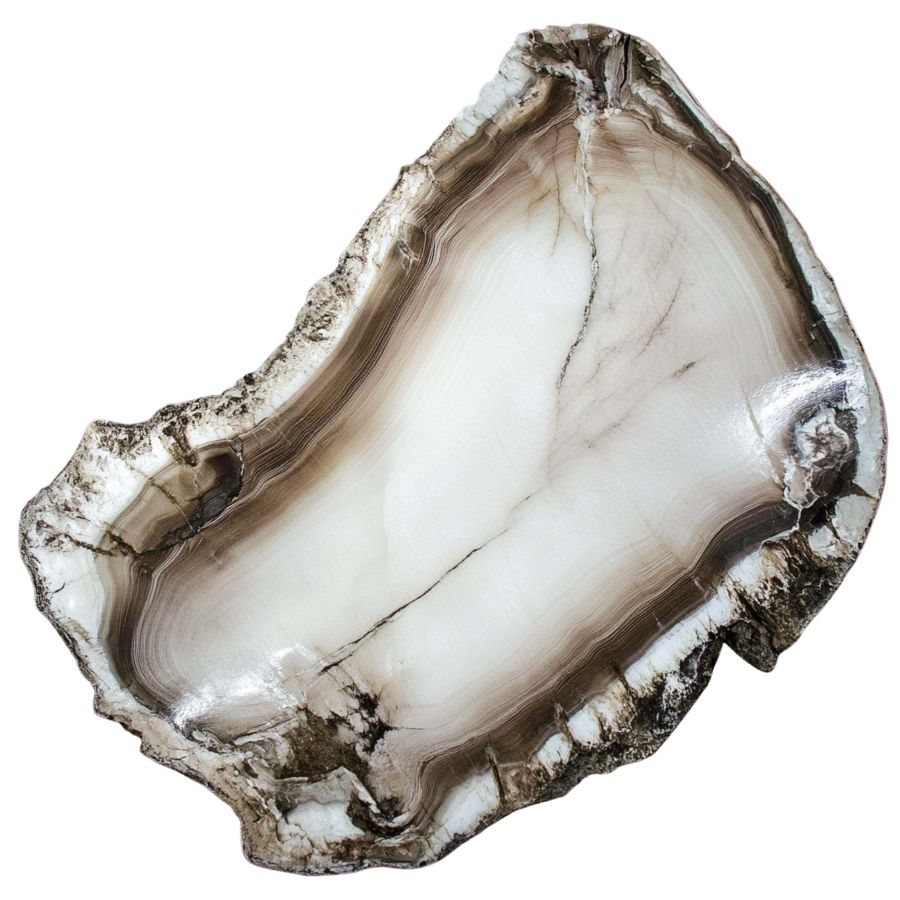
Petrified wood from ancient spruce trees, commonly found in areas like Wyoming and Montana, where coniferous forests once thrived. Piceoxylon is known for its straight grain and pale color, often showing growth rings that tell the tree’s life story.
These trees were part of the ancient boreal forests that covered large parts of North America during cooler periods.
A Quick Request About Collecting
Always Confirm Access and Collection Rules!
Before heading out to any of the locations on our list you need to confirm access requirements and collection rules for both public and private locations directly with the location. We haven’t personally verified every location and the access requirements and collection rules often change without notice.
Many of the locations we mention will not allow collecting but are still great places for those who love to find beautiful rocks and minerals in the wild without keeping them. We also can’t guarantee you will find anything in these locations since they are constantly changing.
Always get updated information directly from the source ahead of time to ensure responsible rockhounding. If you want even more current options it’s always a good idea to contact local rock and mineral clubs and groups
What Rough Petrified Wood Looks Like
Most of the photos you find of petrified wood are pieces that have been cut and polished. That is certainly useful but isn’t super helpful once you are out in the field. This is what you should look out for once you start hunting:
Exteriors like this
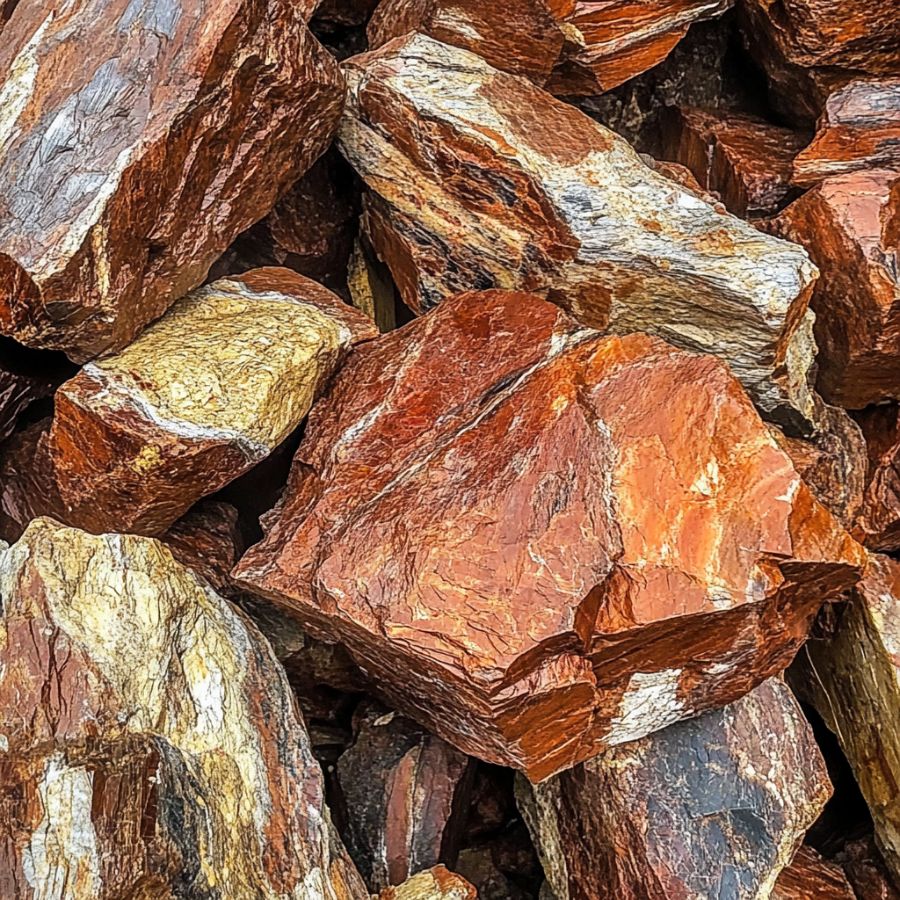
Every type of petrified wood has a different exterior and pattern but this is a good starting point on what to look for.
Texture and grain patterns
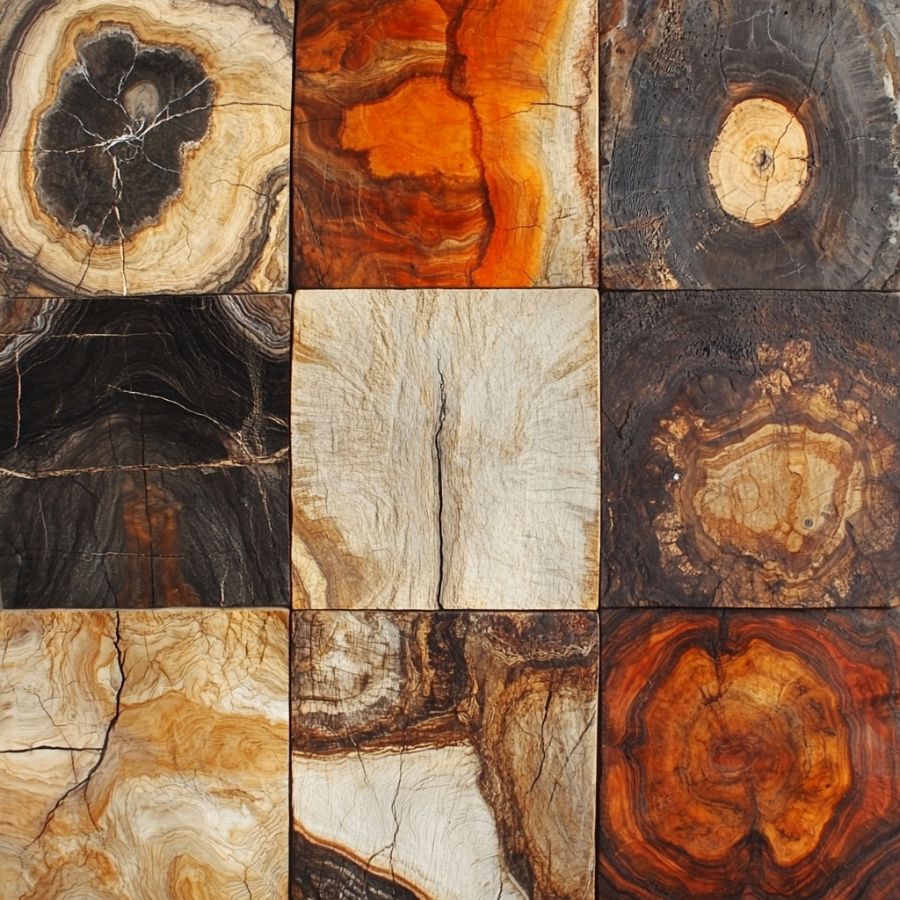
One of the most distinctive features to look for is the texture and grain patterns. Petrified wood often retains the original structure of the tree, including the grain, knots, and even growth rings. These patterns can appear similar to modern wood but are typically more rigid and fossilized.
Examine the surface for any linear patterns or striations that indicate the original wood grain. The texture may feel smoother or more polished in certain areas where mineralization has created a glassy effect.
Coloration and mineralization
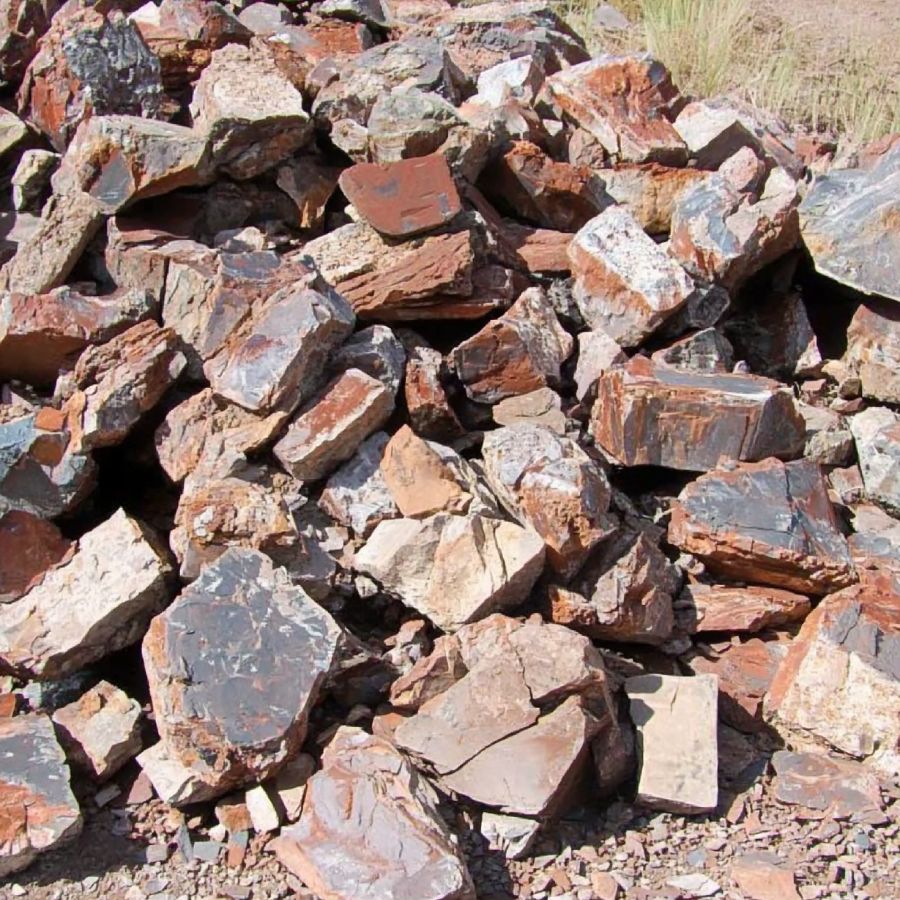
The color of petrified wood can vary significantly due to the minerals that replaced the organic material during the fossilization process. Common colors include shades of brown, red, yellow, orange, and black.
Some pieces might even exhibit multiple colors in intricate patterns. These colors are often more vivid and diverse than those found in regular rocks. When inspecting potential petrified wood, look for these distinct and varied hues, which can indicate the presence of different minerals such as silica, iron, manganese, and others that contributed to the petrification process.
Bark and exterior features
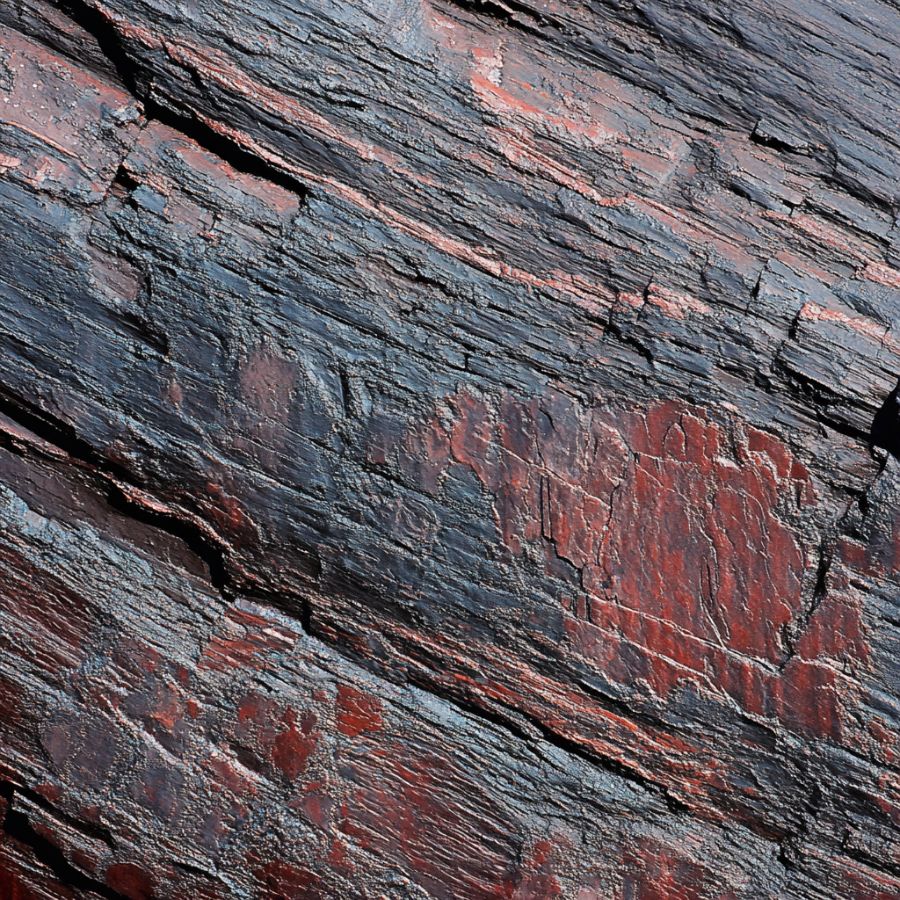
Another telltale sign of petrified wood is the presence of bark impressions or external textures that resemble tree bark. These features are often well-preserved and can include the rough, fibrous texture of bark, knots, or other surface irregularities typical of natural wood.
The exterior of rough petrified wood may also have a weathered appearance, with cracks and fractures that occurred as the wood fossilized over millions of years. Look closely for these natural wood features, as they can be a strong indicator that you have found a piece of petrified wood.
Weight and density
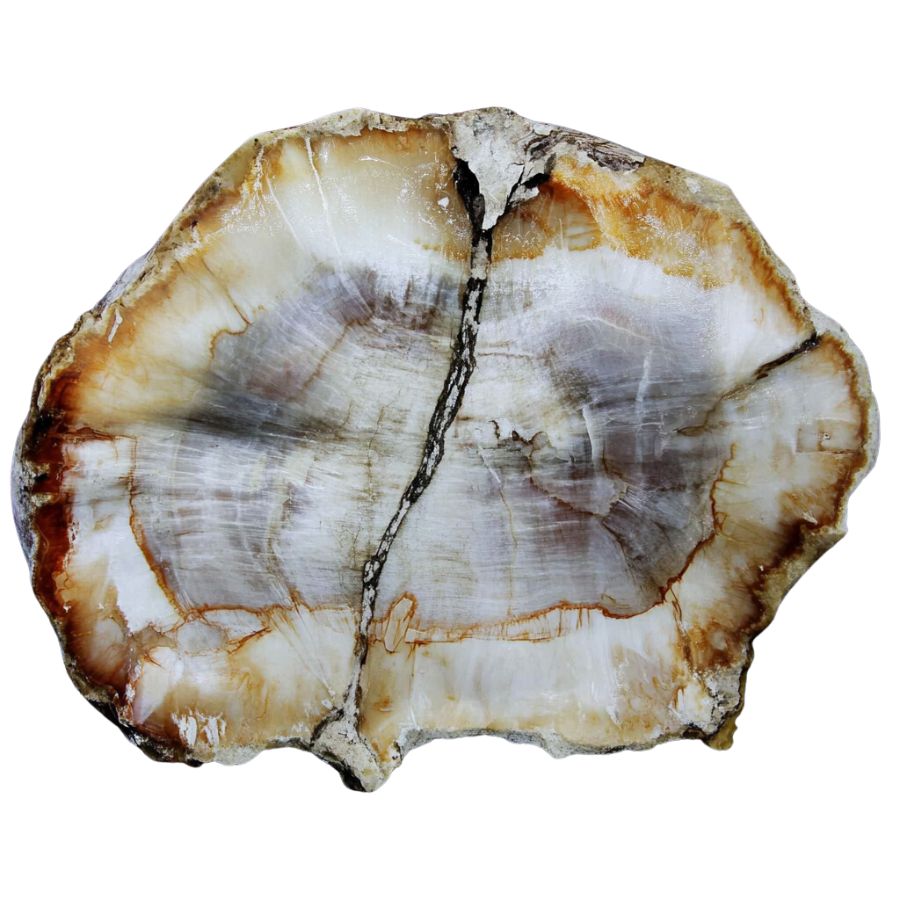
Petrified wood is typically much heavier and denser than regular wood due to the mineralization process. When rockhounding, pick up the specimen to feel its weight. Even small pieces of petrified wood will feel significantly heavier than an equivalent-sized piece of non-fossilized wood.
This increased density is due to the replacement of organic material with minerals, making petrified wood feel more like a rock than wood. Comparing the weight and density of your find with known samples of petrified wood can help confirm its authenticity.
- The extensive local experience of our team
- Input from a variety of local rockhounds and rockhound groups
- The difficulty in accessing a location
- Safety and potential hazards when collecting
- Private and public locations
- A desire to include locations for both the experienced and newbie hunters who are just starting out
Using these inputs we think we’ve put together the best list out there for those who love finding petrified wood for our collections!
General Areas To Try First
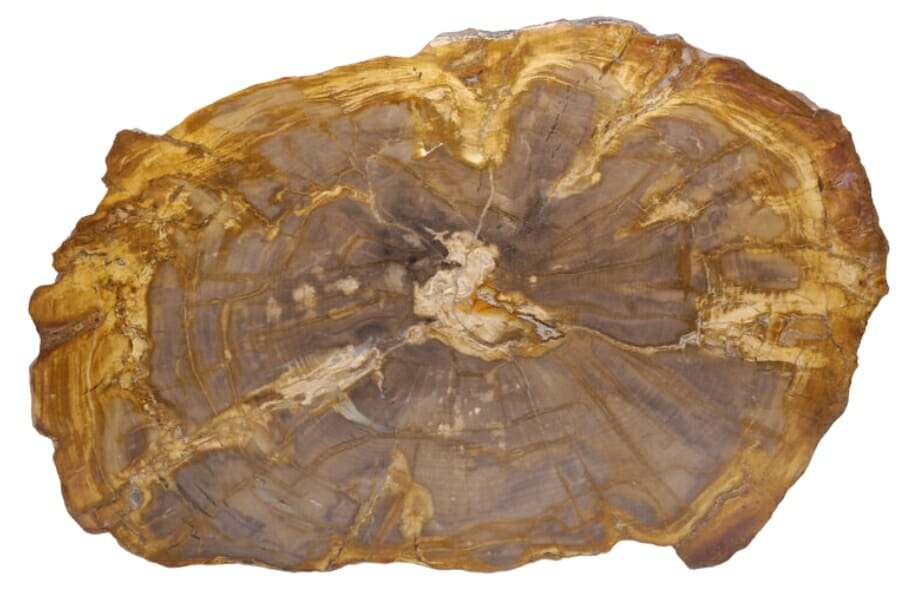
Before we get into the specific places you should be looking we wanted to give you some more general advice. Once you get to your hunting area you should head straight for these areas if you want to have the best results:
Lakeshores
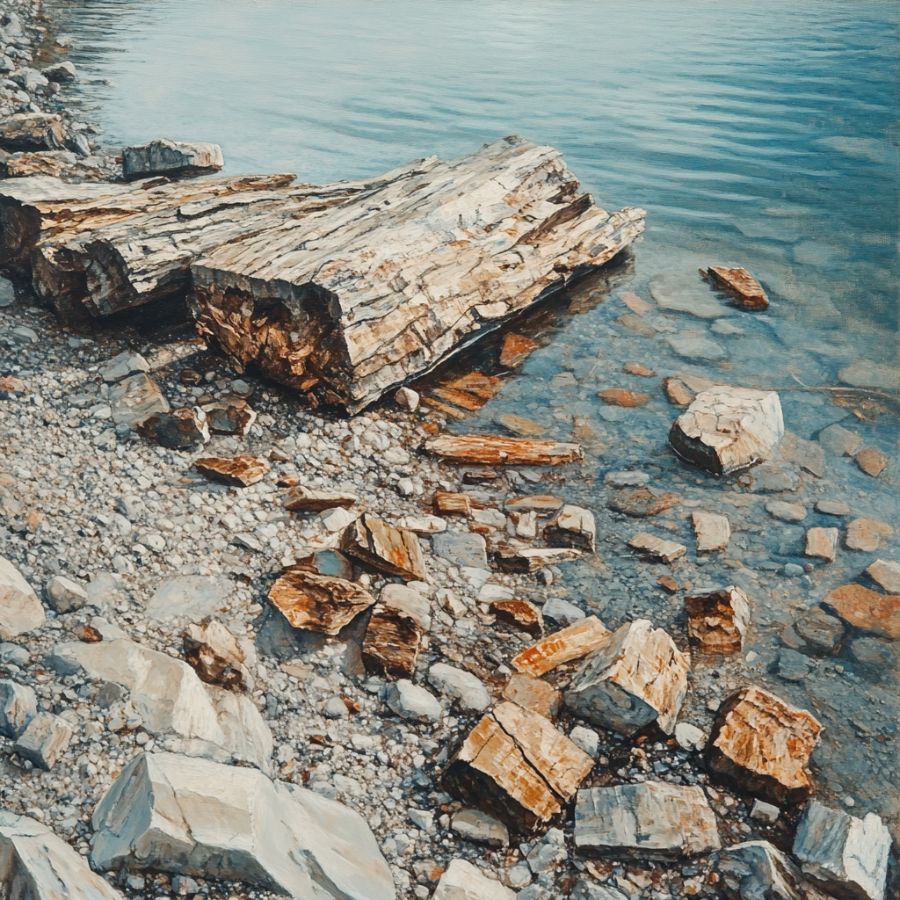
Lakeshores are like natural garbage cans because all things wash up and get left there over time. That includes wood that has turned to stone. As the water rises and falls, it carries sediment and rocks. It also takes the fossilized remains of trees from long ago.
Most lakeshores have a variety of rocks and minerals, which makes them an excellent place for petrified wood to grow and thrive. You’ll find a nice mix of sedimentary and volcanic rocks, the best sites for preserving wood fossils.
Roadcuts
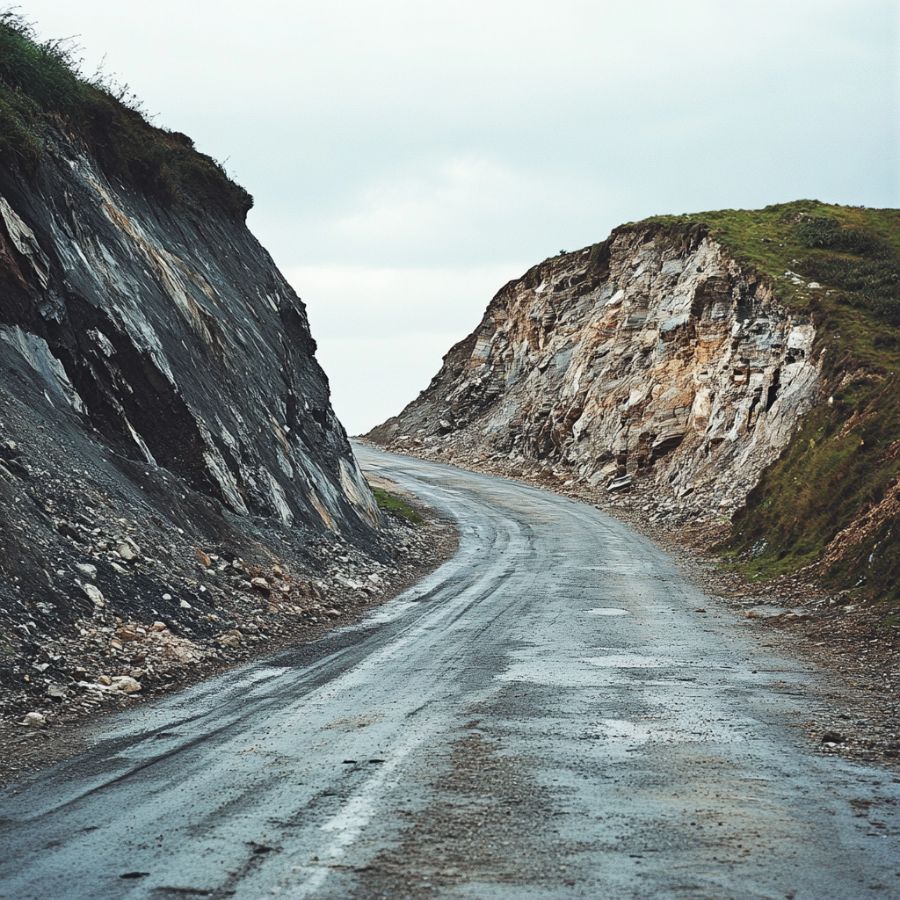
When building roads, parts of the ground are often cut away to make a smooth path. The magic happens when the road cuts through layers of rock and soil. Petrified wood is often buried deep underground, and roadcuts let us see these underground wonders.
As workers blast through the rock layers, they accidentally find petrified wood that has been there for hundreds of years. Petrified wood is easy for collectors to spot because the exposed rock layers of roadcuts make it easy to see its unique patterns and colors.
Streams and creeks
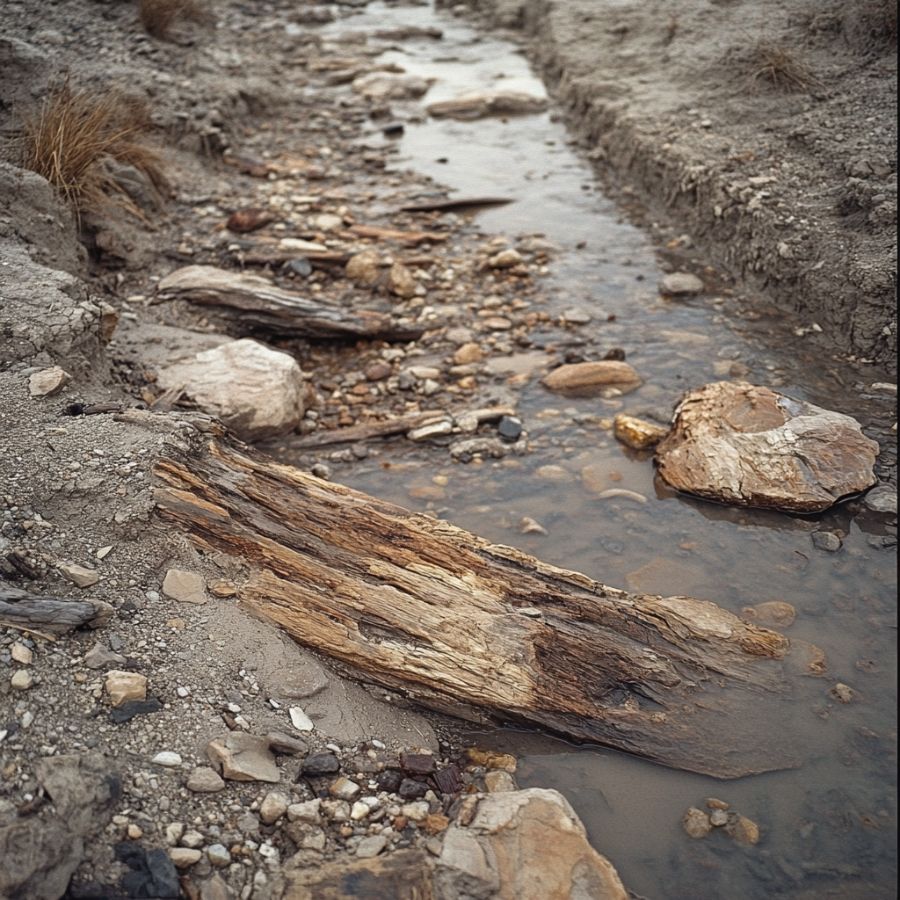
Streams and creeks can move loose sediment away, which can reveal old wood that has turned to stone. As the water moves around, it exposes small pieces or even more significant amounts of petrified wood that have settled on the streambed.
Streams and creeks are more accessible for collectors because they are not as big. You can easily walk along their banks, jump from rock to rock, and look for petrified wood at the water’s edge.
River beds
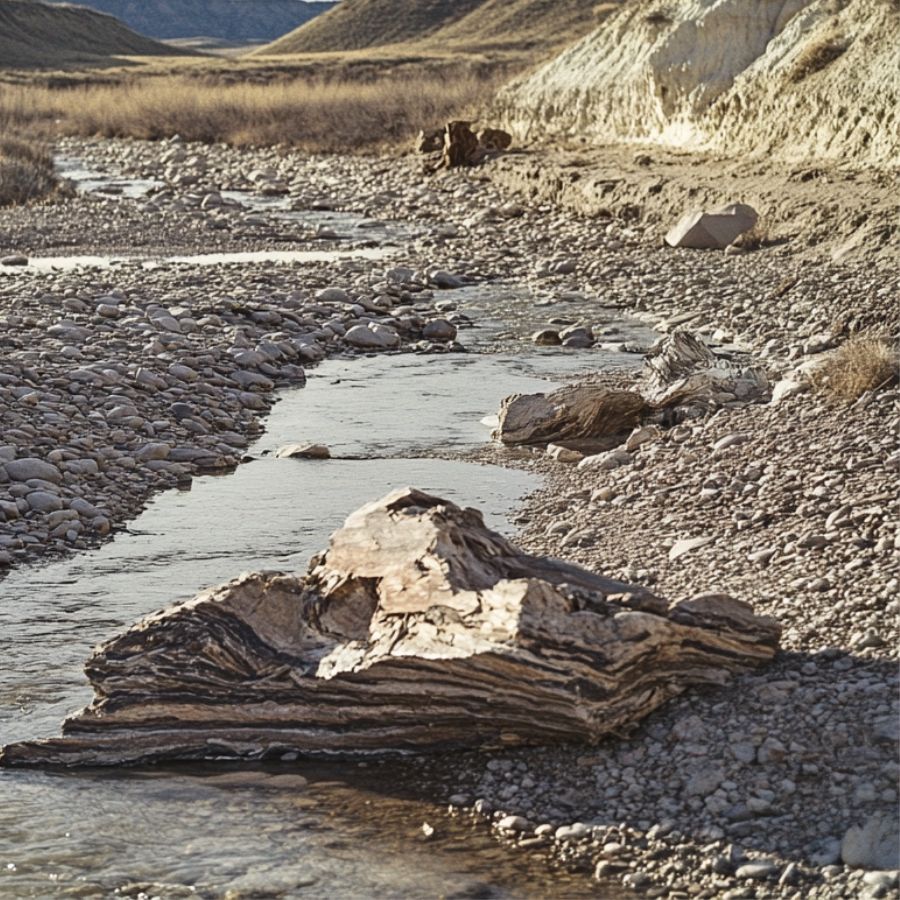
Riverbeds are excellent for finding petrified wood due to their unique geological and environmental conditions. Rapid burial by sediments like sand, silt, and mud protects fallen trees from decay, initiating the fossilization process.
Mineral-rich waters flowing through rivers facilitate the replacement of organic material with minerals such as silica, turning wood into stone. Over time, erosion exposes these buried treasures, making them accessible for discovery.
This dynamic environment, with constant sediment deposition and mineral infiltration, creates ideal conditions for the formation and eventual exposure of petrified wood.
DON'T MISS OUT ON ANY GREAT FINDS!
While you're out searching for Petrified Wood you're going to find A LOT of other interesting rocks and minerals along the way. The last thing you want to do is toss out something really interesting or valuable. It can be easy to misidentify things without a little guidance.
We've put together a fantastic field guide that makes identifying 140 of the most interesting and valuable rocks and minerals you will find REALLY EASY. It's simple to use, really durable, and will allow you to identify just about any rock and mineral you come across. Make sure you bring it along on your hunt!
The Best Places To Find Petrified Wood In Texas
Here are some great places in the state where you can find petrified wood. Even though rockhounding in Texas covers a larger area, you can still do it to find more petrified wood.
Always Confirm Access and Collection Rules!
Before heading out to any of the locations on our list you need to confirm access requirements and collection rules for both public and private locations directly with the location. We haven’t personally verified every location and the access requirements and collection rules often change without notice.
Many of the locations we mention will not allow collecting but are still great places for those who love to find beautiful rocks and minerals in the wild without keeping them. We also can’t guarantee you will find anything in these locations since they are constantly changing.
Always get updated information directly from the source ahead of time to ensure responsible rockhounding. If you want even more current options it’s always a good idea to contact local rock and mineral clubs and groups
Lake Livingston
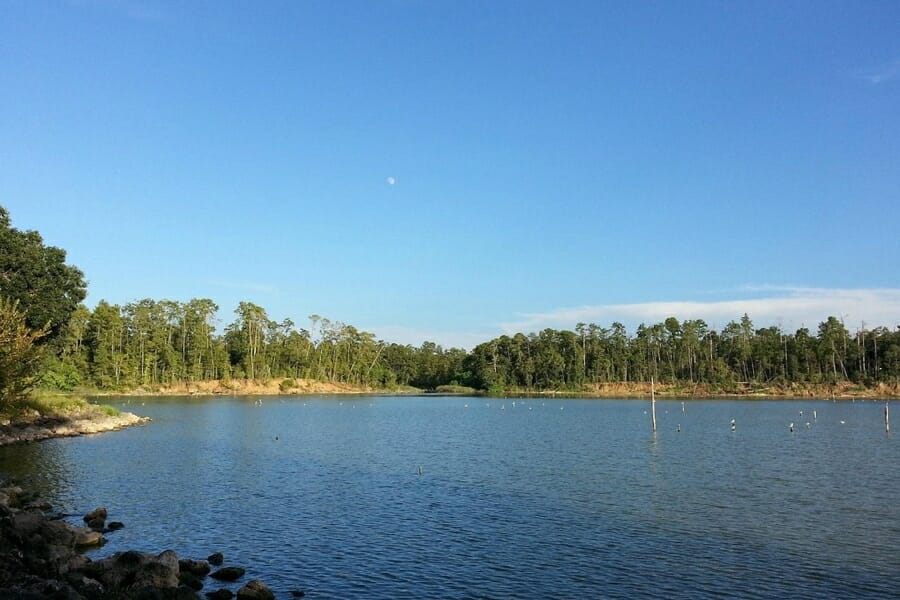
Lake Livingston has a large body of water that covers about 90,000 acres and is very deep. This reservoir is surrounded by lush forests and rolling hills, making it a beautiful place to fish, boat, hike, and do other outdoor activities.
The terrain in the area is varied, with both flat plains and gentle slopes, making for a beautiful and exciting view. The area around Lake Livingston is an excellent example of how Texas landscapes are constantly changing. Sedimentary rocks like sandstone and shale, and limestone formations can be found in the area.
Where we found petrified wood at Lake Livingston
Petrified wood can be found near Lake Livingston and around it. The changing water levels in the reservoir and erosion over time have revealed ancient layers of petrified wood, giving fossil hunters a great chance to find these fascinating treasures.
Research the recent rules and regulations about collecting in Texas before bringing home the petrified wood you found.
Palo Duro Canyon State Park
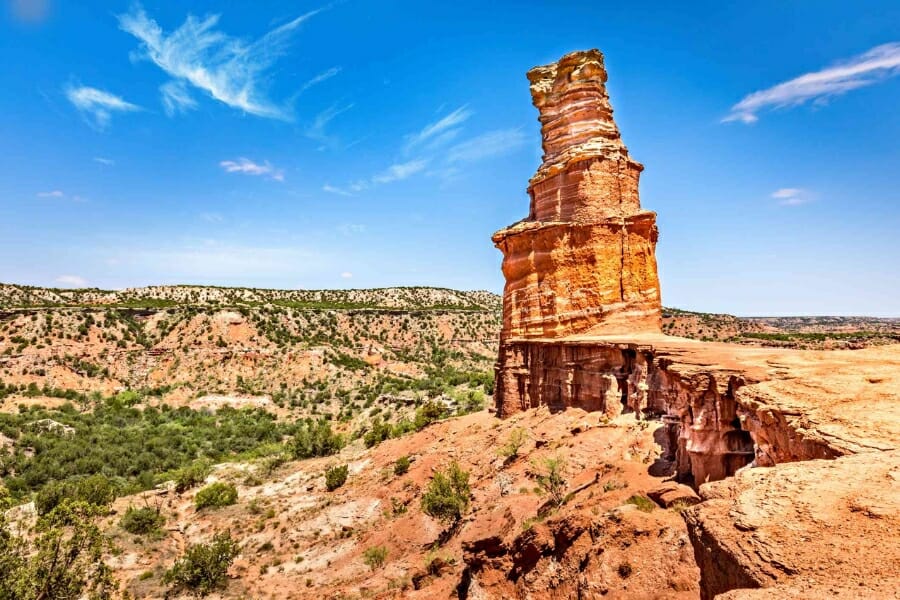
Palo Duro Canyon shows how nature has changed over millions of years. The park has sedimentary rock layers, like the Quartermaster Formation, known for its reddish-brown color.
This beautiful park is known as the “Grand Canyon of Texas” because of its impressive geological features and breathtaking views. The canyon is about 120 miles long, making it the second-largest canyon in the U.S.
With its tall cliffs, rough mesas, and vast prairies, the park has a beautiful view that changes throughout the year. As you walk the park’s trails and take in its beautiful sceneries, keep an eye out for the petrified wood, which adds a new layer of mystery to an already stunning landscape.
Where we found petrified wood at the Palo Duro Canyon State Park
Petrified wood can be discovered along some of the park’s trails and washes, particularly in areas where erosion has exposed fossilized remnants.
While the park does not have specific designated petrified wood collection areas, visitors have reported finding petrified wood in different parts of the park, such as along the canyon walls or within creek beds.
Peach Creek
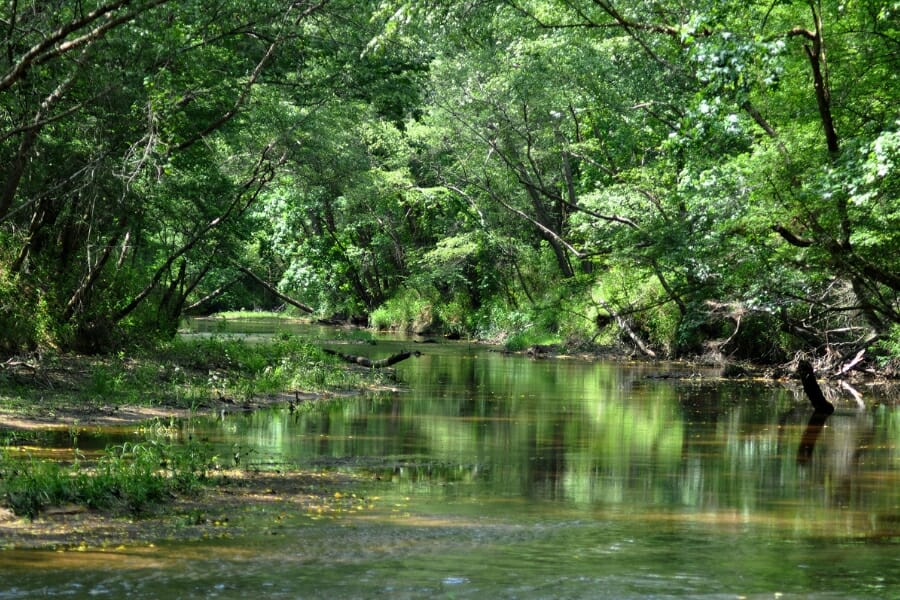
Peach Creek flows through a beautiful area with rolling hills, thick forests, and quiet meadows. The creek runs through the middle of Texas, making it a peaceful place to explore and find new things. The surrounding area is known for its variety of plants and animals, which makes it an excellent place for people who like to be outside.
Petrified wood can be found in Peach Creek, an excellent place to look. Petrified wood fragments and larger pieces have been exposed along the creek bed because the water in the creek flows in a winding path, erosion happens, and the area is made up of sediments.
Where we found petrified wood at the Peach Creek
As you walk along the banks of Peach Creek, look for signs of petrified wood, like different colors, textures, and patterns.
Quitman Mountains
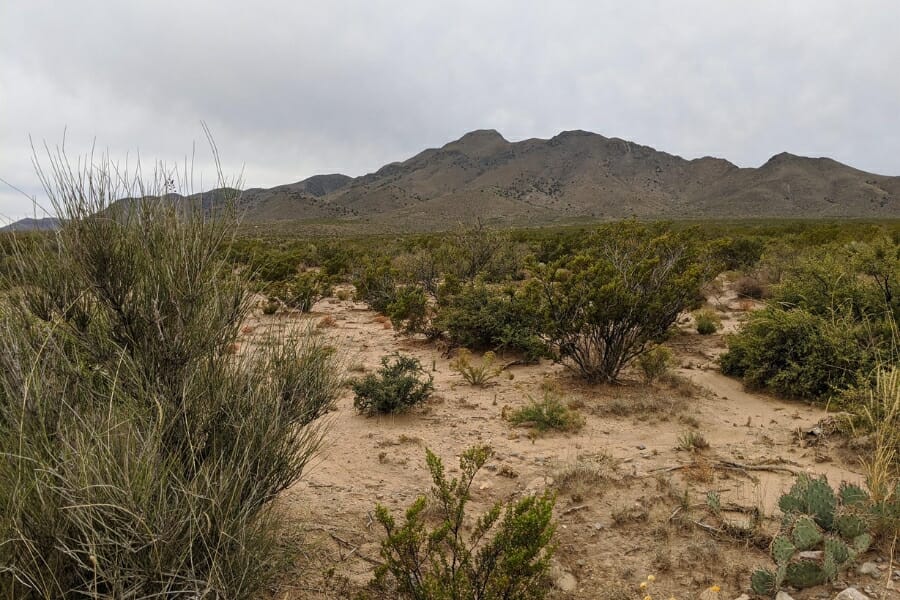
Quitman Mountain is beautiful because of its rough cliffs, steep slopes, and beautiful valleys. The vast beauty of West Texas surrounds the mountain range and has views that go as far as the eye can see. It has a unique landscape with canyons and arroyos that make it a great place to explore and look for fossils.
Quitman Mountain is made up of many different kinds of rocks. Most of the mountain’s base comprises sedimentary rocks like sandstone and shale that formed millions of years ago. These layers of sediment are exactly what petrified wood needs to stay in good shape.
Where we found petrified wood at the Quitman Mountain
One area to search for petrified wood is along the mountain’s creek beds. Erosion processes over time may have exposed fragments or larger pieces of petrified wood in these waterways.
Trinity River
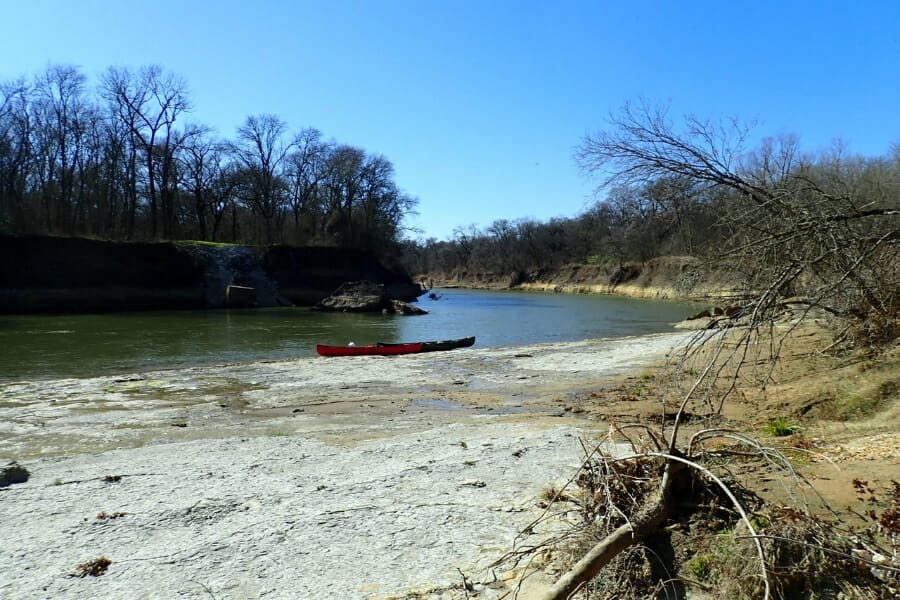
The Trinity River is a beautiful river that runs through Texas. This famous river is not only beautiful to look at, but it also gives nature lovers and people who are interested in petrified wood a unique chance.
The river flows through various landscapes, such as rolling hills, forested valleys, and broad floodplains. The Trinity River is a beautiful and exciting place to visit because its landscape is so different.
Natural occurrences, like erosion and flooding, have exposed small and large pieces of petrified wood along the river’s banks and floodplains. This makes the Trinity River a good place for fossil hunters to look for petrified wood and find hidden treasures.
Where we found petrified wood at Trinity River
Keep an eye out for areas where the soil has been eroded or where gravel and sediment have been deposited, as petrified wood can be found among these materials.
Other Great Places To Find Texas Petrified Wood
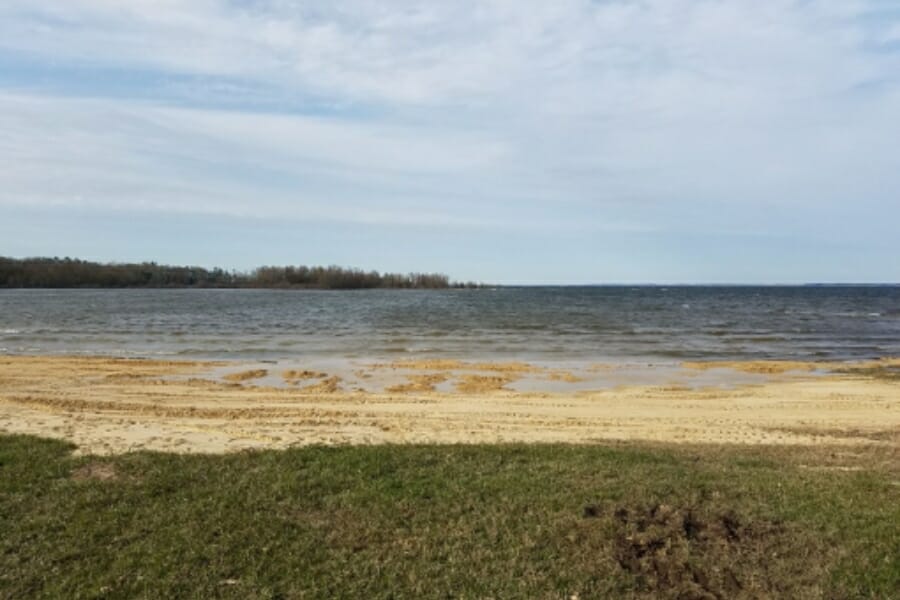
After we tell you where to look for petrified wood in Texas that we think is the best, we’ll give you more places and other ways. To make things easier, we put them in order by county.
| County | Location |
| Bastrop | Smithville surrounding region, in breaks, cuts, surfaces |
| Brewster | Agua Fria Ranch |
| Brewster | Woodward Ranch |
| Comal | New Brounfels area stream beds and banks, plowed fields, roadcuts, excavations |
| Fayette | Rabs Creek |
| Jasper | McGee Bend Dam |
| Madison | All surrounding region, banks, cuts, fields, draws, washes of Madisonville |
| Montgomery | New Caney area creek beds and banks |
| Travis | Mt. Bonnell |
| Val Verde | Kothman Ranch |
| Webb | Rio Grande |
| Wilson | Tessman farm |
| Zapata | Falcon Lake |
| Zapata | Ramirez Ranch |
Common Questions About Finding Petrified Wood In Texas
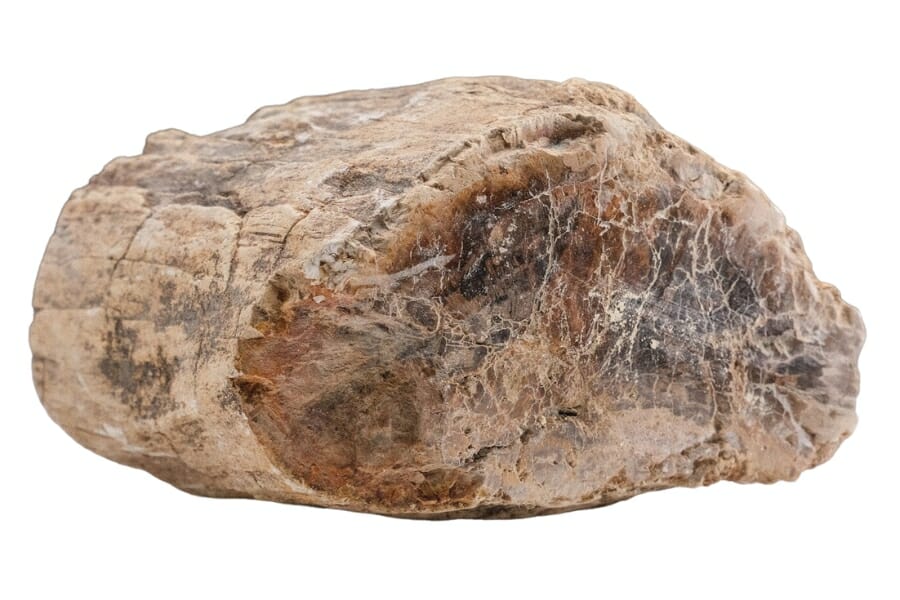
The answers to the following questions about petrified wood in Texas are essential.
How old is petrified wood in Texas?
The age of petrified wood in Texas depends on where it is and what the geology is like. In Texas, petrified wood can be anywhere from a few thousand to a few million years old.
Some pieces may be from the Cretaceous Period when dinosaurs roamed the Earth from about 145 million to 66 million years ago.
Can you find petrified palm wood in Texas?
Yes, petrified palm wood can be found in Texas. Petrified palm wood is a type of petrified wood that comes from old palm trees.
Texas is known for its many different kinds of petrified wood, some of which come from palm trees that grew there millions of years ago.
The Best Places To Buy Petrified Wood In Texas
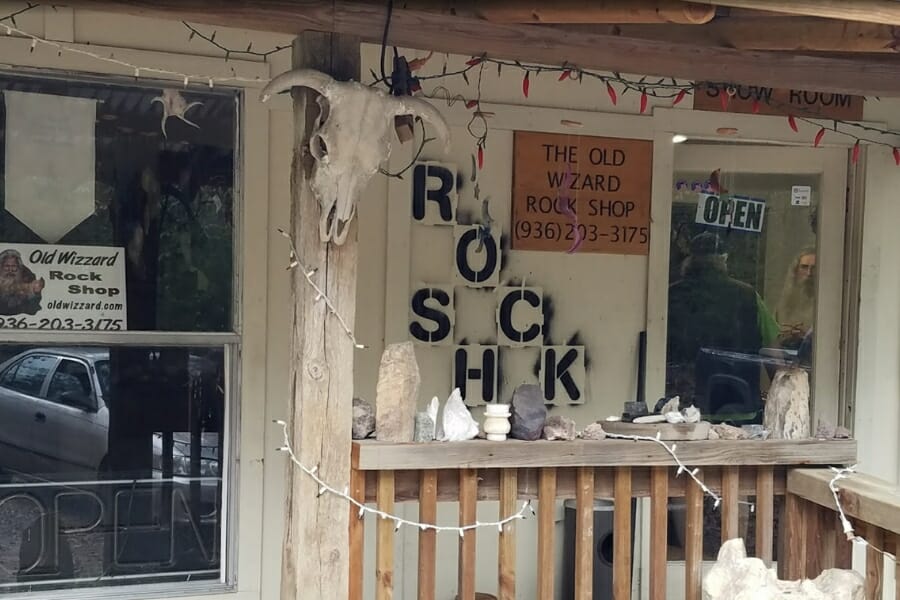
Not everyone enjoys spending the whole day outdoors finding petrified wood. Sometimes, all you want is something new for your collection or to give as a gift. Here’s a list of rock shops where you can buy petrified wood in Texas:
- Johnson’s Rock Shop – 238 N Lincoln Wiggins St, Livingston, TX 77351
- Katy Rock Shop – 535 Pin Oak Rd, Katy, TX 77494
- Nature’s Gallery – 1102 Elm St Ste 102, Carrollton, TX 75006
- The Old Wizzard’s Rock Shop – 14005 African Hill Rd, Willis, TX 77378
- Power of the Rainbow – 1730 W Randol Mill Rd #125, Arlington, TX 76012

